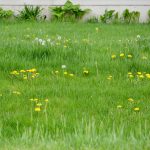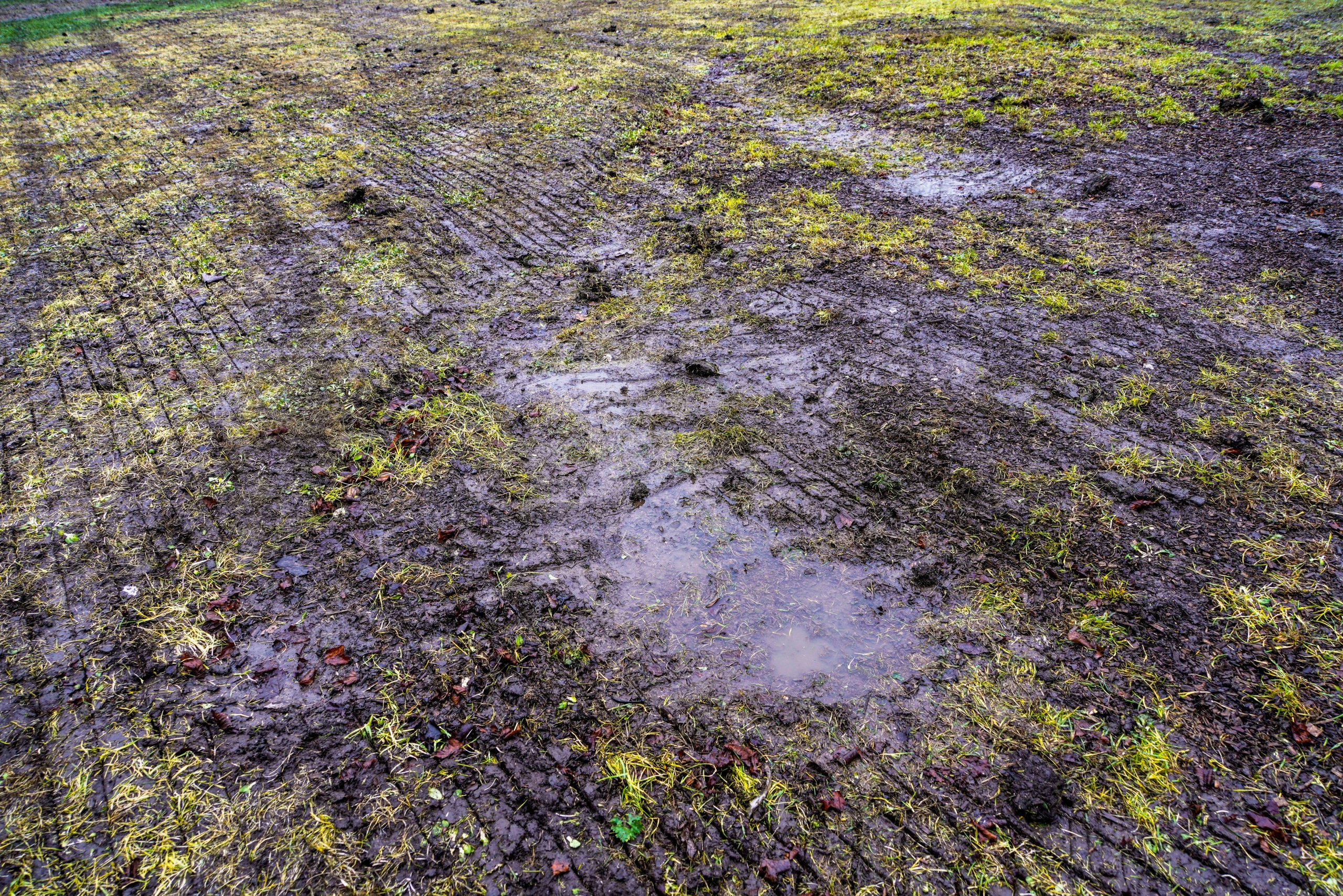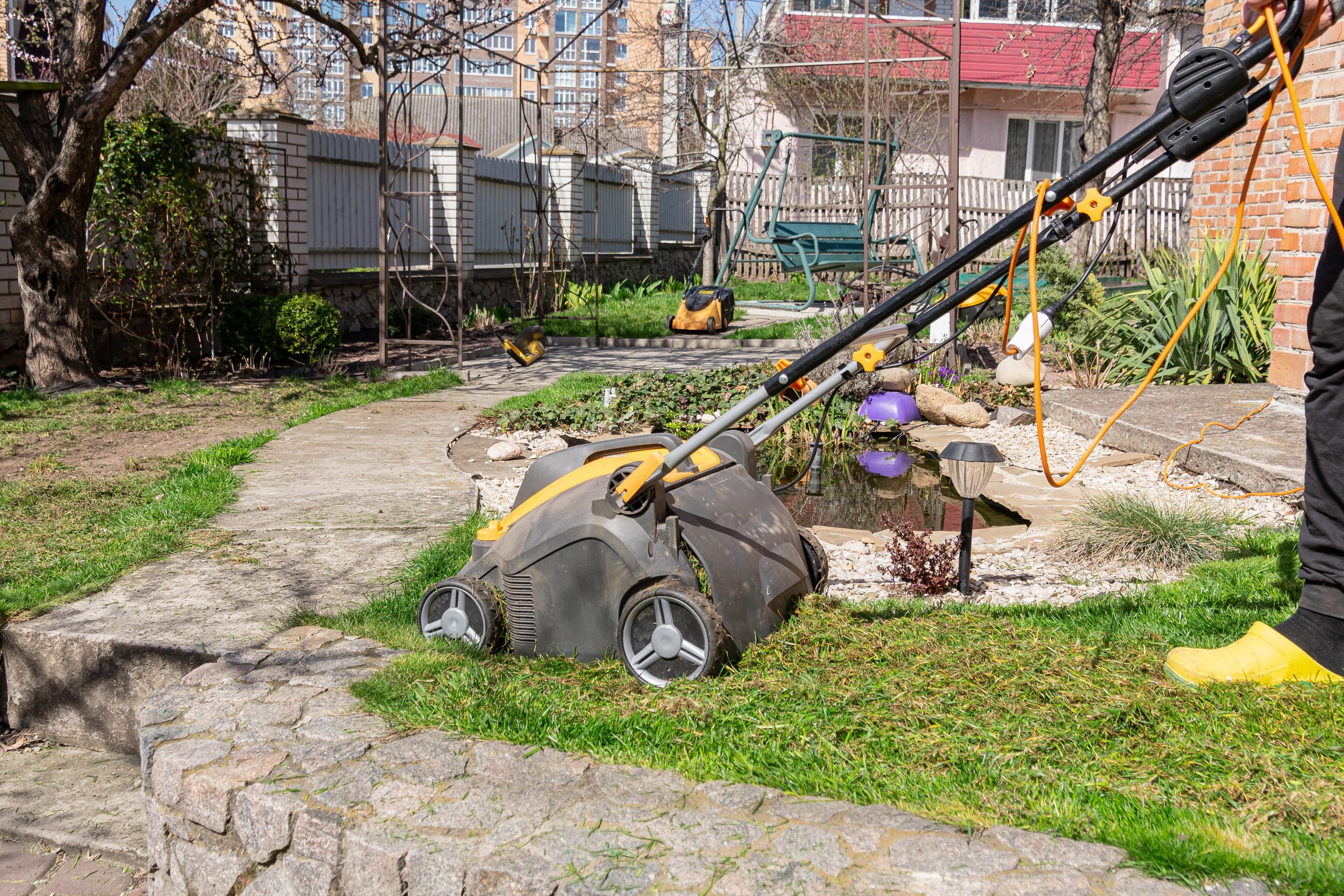If you’re a lawn care enthusiast, you’re probably all too aware of the problems that thatch, or dead turf, can bring. Leaving dead lawn debris on your lawn can affect the health of your grass and ultimately ruin the look of your garden.
Scarifying blades are a special kind of tool used to cut thatch. These are much better suited to cutting thatch than lawnmowers for and they also serve the function of raking the lawn surface, to allow for new seeding.
A scarifying blade is actually made up of dozens of smaller blades, which are mounted on a rotating roller. This allows the blade to cut a few millimetres into the soil, making it perfect for both removing thatch and raking.
There are three different types of scarifying blades- fixed, loose, and double-cut and each looks a little different.
Let’s take a closer look at each one…
Fixed Blades
Fixed blades are some of the most commonly used scarifying blades and for good reason. The blades are thick, allowing you to rake as far as 5mm underneath your lawn. The blades are spaced evenly, 2 centimeters apart from one another. They look a little like a square with two arms.
Here are some of the biggest advantages of fixed scarifying blades:
- Cost- Fixed blades are by far the cheapest option, thanks to their simple, yet effective design. Therefore, if you’re on a budget, or have a small lawn, fixed blades could be a perfect choice. In fact, a brand-new fixed blade costs less than $100.
- Durability- Not only are fixed blades cheap, but they’ll also last you a lifetime. Most fixed blades are at least 3mm thick, allowing them to take a lot of punishment before malfunctioning. This makes them a great choice if you’re looking for low-maintenance machinery.
However, Fixed blades are far from perfect. Here are the biggest flaws:
- Efficiency- Due to the wide spacing between the blades, fixed blades are far from efficient. You’ll have to go over the same patch of turf several times before you will notice results. So, if you want something quick and easy to use, you should stay away from fixed blades.
- Versatility- Fixed blades are only suited to general lawns. They’re unable to cope with gravel or stones and are far too thick for professional sports turf. So, if your lawn features gravel, or is particularly high-end, fixed blades aren’t for you.
Double Cut Blades
Double-cut blades are more expensive than fixed blades but cheaper than loose blades. They’re spirally mounted, and the blades are very close together. The blades are also 1.5mm thick and are designed for sports grounds and high-end lawns. They look a little like a wheel.
Here are the biggest advantages of double-cut blades:
- Effectiveness- Double-cut blades have twice as many blades as fixed ones. This means that you’ll be able to do twice as much work in the same amount of time. So, if you’re looking for a way to save time, double-cut blades are a good consideration.
- Cost- Double-cut blades aren’t the cheapest, but for their effectiveness, they’re certainly a bargain. In fact, double-cut blades are almost always worth the extra money.
However, double-cut blades aren’t perfect. Here are the design’s biggest drawbacks:
- Limited Use- The design of double-cut blades means that they won’t be able to target any thatch below 2mm in depth. So, if you’re looking for something to do deep work, fixed blades might be a better choice.
- Durability- The design of double-cut blades is very intricate, and the blades can very easily become damaged. If you want something sturdy, fixed blades might be a better option.
Loose Blades
Loose blades are the most expensive option. They feature a retracting design, which comes with a host of advantages. The blades are also coated with nylon, to increase durability and overall efficiency. Their design lends itself to more high-end lawns. Loose blades also look like a wheel.
Loose blades are a great choice, and come with several advantages:
- Versatility- Unlike fixed blades, loose blades can handle a variety of surfaces. So, if your lawn features gravel or tree roots, double-cut blades are probably your best choice.
- Effectiveness- Loose blades will do an excellent job of clearing turf, and you will notice results far quicker than if you were to use fixed blades. In fact, some professionals have reported that scarifying takes half as much time with loose blades as with fixed blades.
However, due to their design, double-cut blades are flawed in a few key areas:
- Durability- Although they have a nylon coating, loose blades are very thin. This means that it’s very easy to damage them, which can end up costing you a lot of money.
- Cost- Loose blades are the most expensive type of scarifying blade. Unless you have a very high-end lawn, it might be hard to justify the cost.
Which Blade should I Use?
Ultimately, your choice of blade depends on your personal goals, as well as the type of lawn that you have. Each type of blade has its uses, so you want to choose the most efficient tool for the job.
If you have a more basic lawn, and the thatch you’re trying to remove is more than 2mm thick, opt for a fixed blade. However, if your lawn is a little more high-end, or you’re looking to work on a sports ground, double-cut blades will be your best friend. Finally, if your lawn is complex, featuring obstacles such as gravel, you’ll want to spend the extra money and invest in loose blades. Chances are, the other blades will break before you’re finished.







